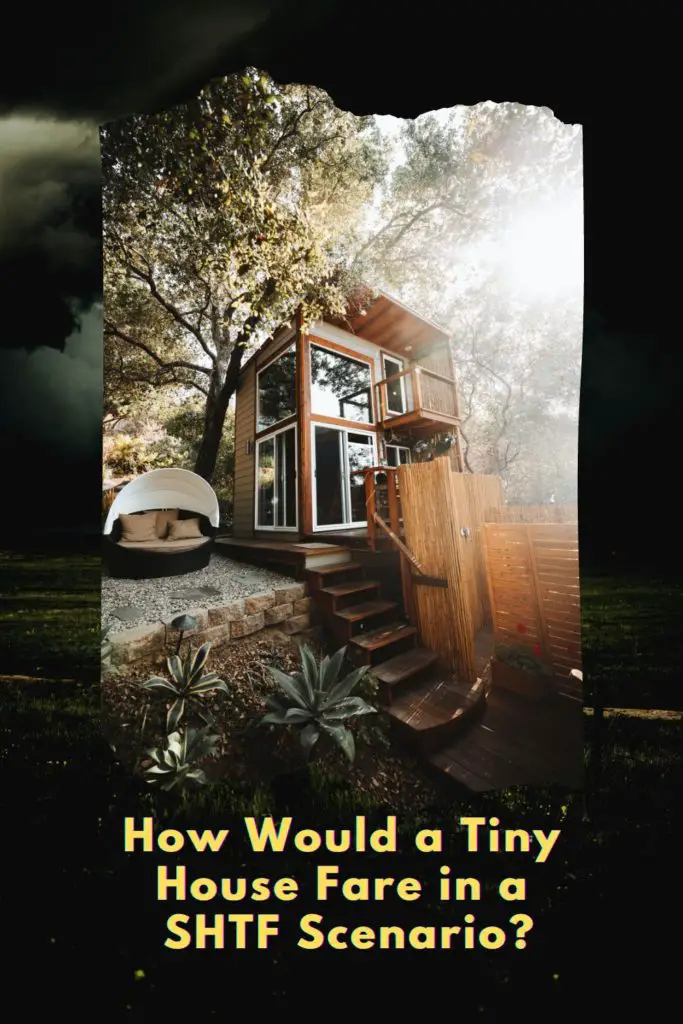Written by Martin A. Banks
Tiny houses are minimalist homes that many survivalists and homesteaders prefer over traditional options. At first glance, it seems they would be vulnerable targets for looters in a SHTF scenario, but upon closer inspection, you’ll notice they have some impressive advantages.
Here are the pros and cons of tiny houses.
What Qualifies as a Tiny House?
There is no standard size range for tiny houses, but the general rule is that any home under 600 square feet qualifies. The average tiny house in the United States is 225 square feet, and the smallest can be 60 square feet. There are also two main categories:
● Mobile: RVs, vans, trailers, gypsy wagons and other homes on wheels are considered tiny houses if they are the owner’s primary residence.
● Sedentary: Small cabins, sheds, granny pods and other structures meant to stay in one place are sedentary tiny houses. However, if you have a vehicle that meets the towing requirements and a wide enough trailer, you can also relocate them if they don’t have foundations.
Although these categories have one major difference, their functionality is still largely the same when it comes to survival prep. Here are the most relevant advantages and disadvantages of tiny houses in a SHTF scenario.
Pro: Low Profile
Secrecy is the greatest benefit of owning a tiny house in any survival situation. They don’t attract nearly as much attention as big cabins on multiple-acre homesteads. These homes allow you to keep a low profile and fly under the radar while everyone else struggles to keep looters and beggars off their property.
There’s a good chance nobody will find you if you find a secluded location for your tiny home. Most don’t have to follow local building codes, so you can easily customize the house to make it blend in with the environment.
Emergency preparedness doesn’t have to be complicated. If you have a reliable shelter and don’t draw attention to yourself, your chances of survival are better than most people’s. Tiny houses check both boxes, keeping you out of trouble while everyone else dukes it out. It’s best to avoid the action in a SHTF scenario.
Con: Weak Defenses
However, you might be a sitting duck if unsavory characters happen to discover your tiny home’s location. They have weak defenses compared to bigger homesteads. You can buy weapons, set up fences and choose a location with natural obstacles in the surrounding terrain, but the structure itself doesn’t offer much protection.
In the worst-case scenario, outsiders will trap you inside the house and leave you with nowhere to run or hide. You’re powerless against their demands at that point. That’s why choosing an out-of-the-way location is so important when building a tiny home. If your residence can’t stop an attack, you’d better hope the environment keeps trespassers away.
Pro: Resource Efficiency
One of the hardest parts of survival is conserving your resources, especially energy. Tiny houses make this task much easier because they require minimal heat, electricity and other utilities to remain functional. The small structure also forces you to practice conservative consumption habits, helping you become a more disciplined prepper.
Tiny homes are also financially efficient. Your utility expenses will be low, and you might not even need a loan or mortgage. Maintenance costs are microscopic compared to most other houses. All in all, they are ideal for conserving precious resources and ensuring you live within your means.
Con: Lack of Privacy
If you share a tiny home with your family, you won’t have much privacy. Most only have one room, with perhaps a loft or small secluded bathroom. The kitchen, living room and bedrooms are all within sight of each other. Introverted people who need their personal space would quickly grow tired of this living arrangement.
If you’ve ever shared a bedroom with a sibling or roommate, you know how frustrating the lack of privacy can be. Tensions rise and arguments break out, which would not be ideal in a survival situation. Tiny homes make it difficult for groups to remain united, which is ironic considering the close-quarters environment.
Pro: Mobility
Although there isn’t much privacy, you can always relocate and find a change of scenery. This advantage makes mobile tiny homes slightly better than sedentary ones for survival purposes. The ability to pick up everything and get out of dodge cannot be overstated. You might need to relocate due to bad weather, resource depletion or dangerous human activity.
Many mobile tiny home owners make like birds and retreat farther south when winter arrives, which leads to the development of tiny house villages for the season. These communities allow you to create connections with other preppers, pool your resources and build a resilient nomadic lifestyle.
Sometimes Less Is More
You don’t need an expansive homestead and survival bunker to make it out of a SHTF scenario. Sometimes less is more, and tiny homes demonstrate this point. Although they’re more difficult to defend and don’t offer much privacy, their mobility, efficiency and secrecy outweigh the disadvantages. Survivalists on a budget should strongly consider building or buying a tiny home.
About the author
Martin Banks is the managing editor at Modded. Follow him on Twitter @TModded for frequent updates on his work.
If you found this article interesting or helpful, please consider helping us out (without costing you anything)! We are an affiliate of Amazon.com, which means we received a small commission if you click through one of our Amazon links when you shop, at totally no cost to you. This helps keep the lights on at the blog. Thanks!
Photo by Roberto Nickson on Unsplash; background by Nikolas Noonan on Unsplash


